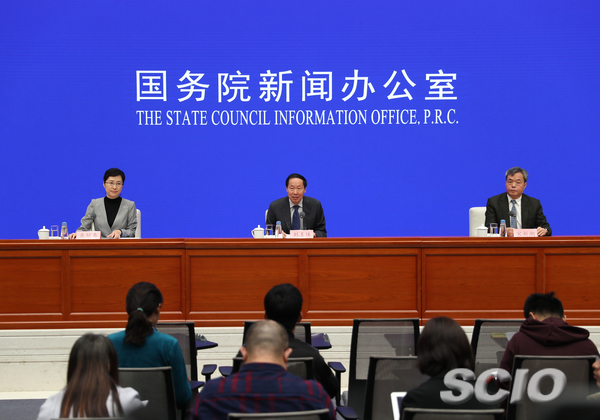China to announce new national-level cultural heritage sites
China will soon announce the country's eighth group of 762 major cultural heritage sites to be put under national-level protection, according to China's National Cultural Heritage Administration (NCHA).
China will soon announce the country's eighth group of 762 major cultural heritage sites to be put under national-level protection, according to China's National Cultural Heritage Administration (NCHA).

With the newcomers, China will have 5,058 historical and cultural sites for national-level protection and preservation, Liu Yuzhu, head of the administration, said Thursday at a press conference.
The 762 sites consist of ancient ruins, tombs, constructions, grottoes and other sites of historical and cultural significance, according to Liu.
The selected sites reflect the development of Chinese society from different aspects, including agriculture, education and industry, said Song Xinchao, deputy head of the NCHA.
The administration will take joint actions with provincial-level authorities to enhance the protection and preservation of the sites, including restricting construction projects near the sites, assigning institutions to take charge of protection and clarifying the responsibilities of all relevant parties, said Liu.
Diversified ancient architecture protection
The number of ancient constructions in the eighth list has reached 280.
According to Liu, these constructions include pagoda, bridge, temple, city wall, government office, castle, residence, guild hall, shrine, archway, pavilion and others.
"The more diversified content has further enriched the system of cultural heritage sites under national-level protection," Liu said.
There are 167 ancient ruins and 30 ancient tombs in the eighth group of cultural heritage sites under national-level protection.
These ruins and tombs can be dated back to Paleolithic and Neolithic periods as well as the following historical periods.
Liu said they contain important values for and have significant promotion effects on the research of China's anthropogenesis, origin of civilization, as well as formation and development of the unified multi-ethnic country.
Increased focus on modern sites
There are 234 historic sites and landmarks from the modern times, accounting for 30.7 percent of the total. The ratios for the sixth and seventh groups are respectively 19.15 percent and 16.98 percent.
A total of 40 major cultural heritage sites reflect the development accomplishments since the founding of New China, exceeding the total of the first seven groups, Liu told Xinhua.
In sum, 138 revolutionary sites are included into the list, Liu said, adding this will for sure further promote the protection and management standards of revolutionary cultural heritage.
The NCHA will take the opportunity to carry forward revolutionary spirits and inherit revolutionary culture, he said.
Releasing vigor of cultural heritage
The eighth group of 762 major historical and cultural sites protected at the national level was approved at the State Council's executive meeting chaired by Premier Li Keqiang in late September.
This round of application started in July 2018. The symbolic and national significance of cultural relics were underlined during the selection process.
"For a country with a time-honored civilization like China, it is important to strengthen the protection of cultural relics as a way to reinforce historical memories," Li said.
The meeting stressed the necessity to improve relevant laws and regulations, attract the participation of the private sector, and ensure effective protection, management and proper utilization of the valuable heritage sites of the Chinese nation. Such efforts will help carry forward the Chinese civilization and boost the nation's confidence and cohesion.
Only if the cultural heritage gets well protected can it more sufficiently become integrated into modern economic and social development, fully play its role in the modern society, and become truly alive, Liu told Xinhua.
These sites, reflecting the civilization's endurable charms and inscribing the nation's steps forward, deserve the merit as the country's treasures, he said.

